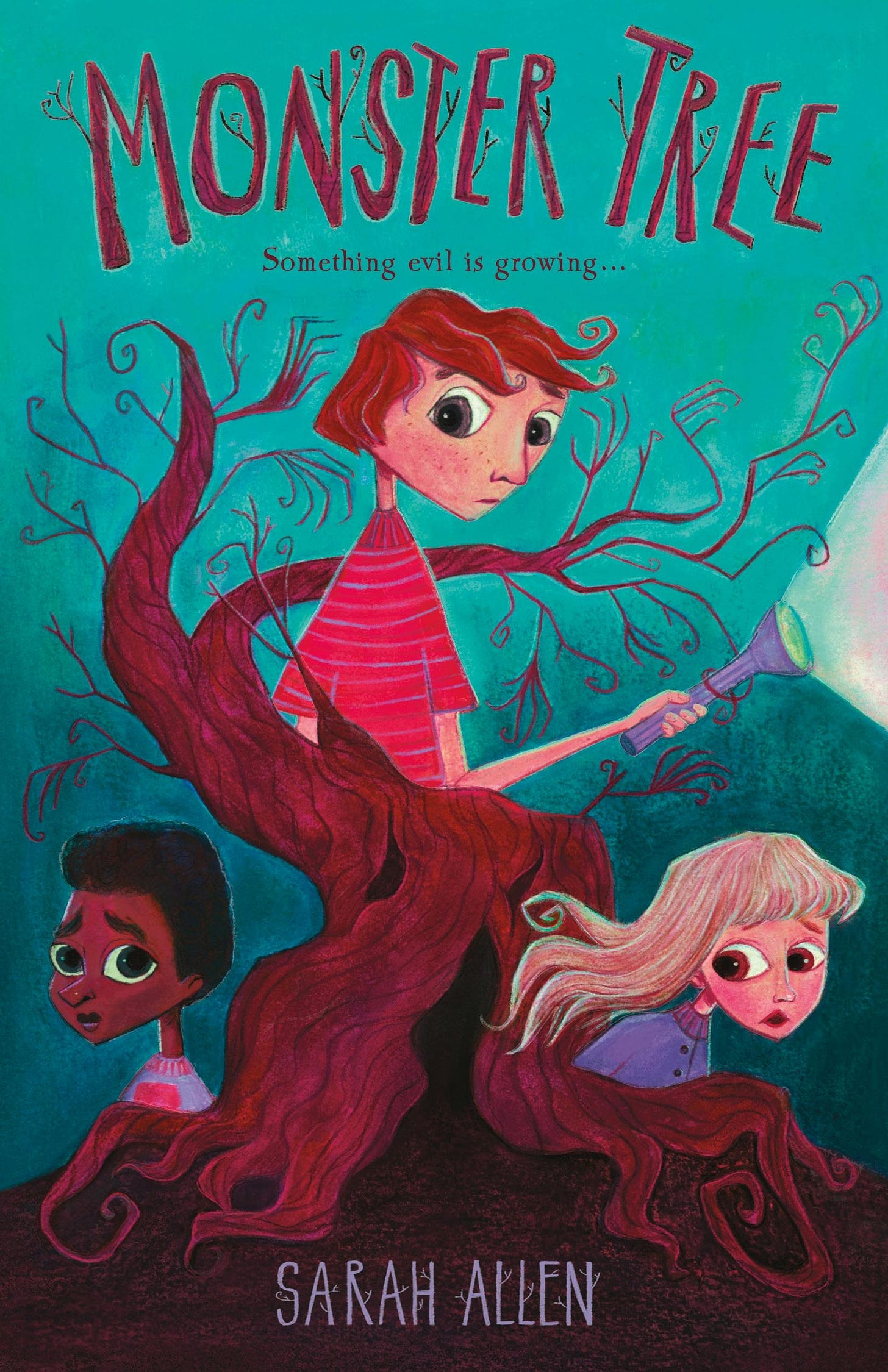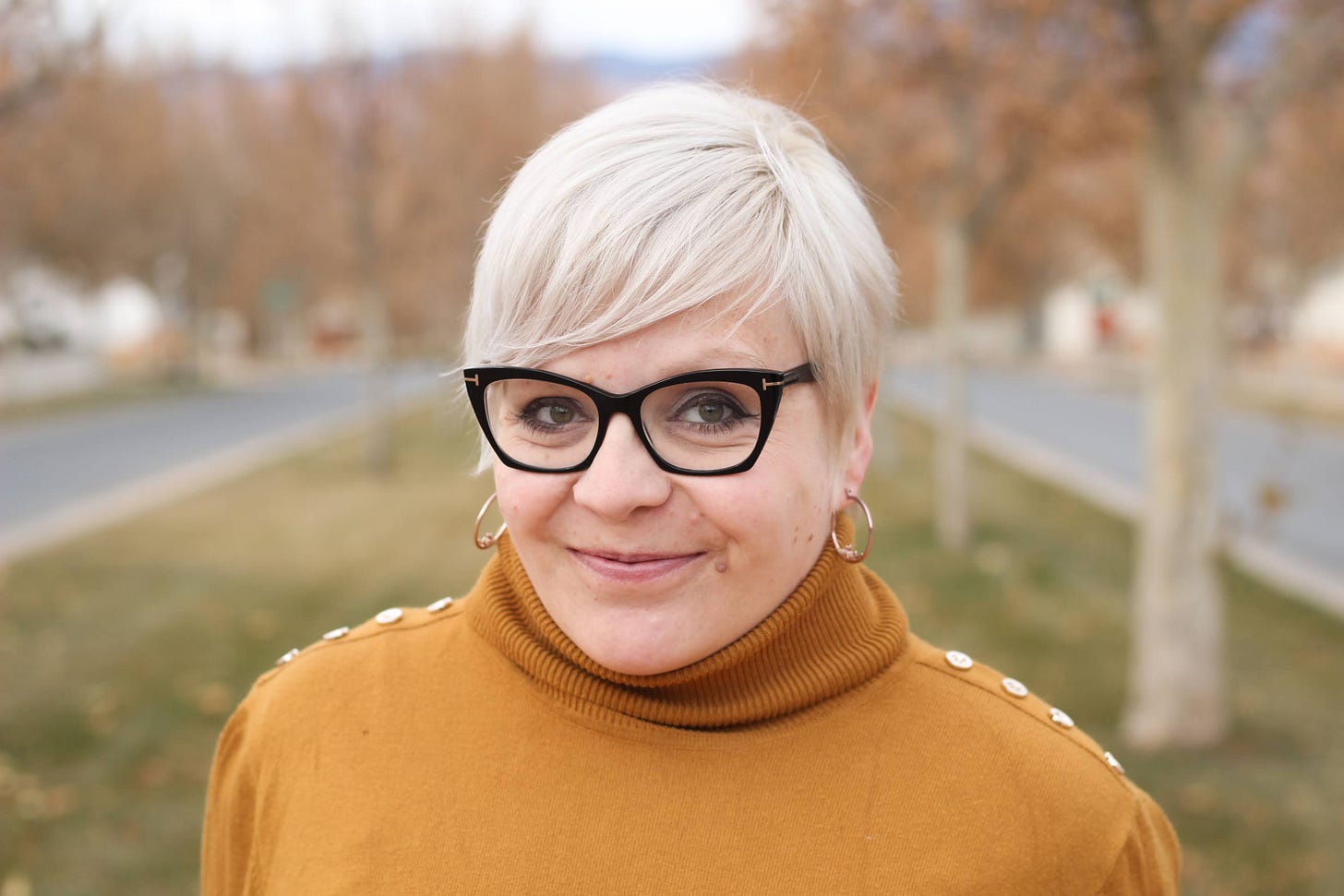Write Like a Kid: A Guide to Better Creativity
Writing Advice Remix with MONSTER TREE author Sarah Allen
It’s time for another Writing Advice Remix, the interview series where we take common writing advice and remix it for practical application. Today, I’m so excited to welcome another children’s book author to our series. Sarah Allen is the prolific author of four middle grade books. Her latest book, Monster Tree1, follows the story of Linus, a boy struggling with the internal monsters of his own grief and the literal monsters living in the tree next door.
I first met Sarah during our MFA program at the University of South Florida when she was getting her second MFA in poetry. In our fiction workshop, she was such a fount of practical information as an experienced, traditionally published author, and I’m thrilled to share her insights on day jobs, writing for children, and why writers of all genres and age categories should learn to write like a kid.
Before we jump in, you know what to do: take anything that’s useful to you and your writing life and leave everything that’s not behind.

1. What’s the worst piece of writing advice you’ve ever heard? What problem is it supposed to solve? And why is this advice actually unproductive?
I was sitting in a fiction workshop in my MFA program at BYU one evening, chatting with the other writers in the room. I was already somewhat of an outlier, because the thesis project I was working on was a children’s book. Fortunately, my professors were on board with this, and I was having a great time with the project, which eventually ended up becoming my second published novel, Breathing Underwater.
I got more side-eye about writing for kids from a few other students than I did from my professors. That night, as we were chatting before the start of class, the subject of spooky books and kids books came up. The student next to me said, “I mean, you can’t write a literary zombie book.”
Of course I had to gently disagree. (I was more vehement on the inside . . . I am allergic to conflict!). I recommended, for example, that he read The Girl With All The Gifts.
Anyway—that is what I would say is the worst advice or the worst mentality about writing that I’ve come across: that writing genre fiction, particularly genre fiction for kids, is somehow less literary than other writing. Or that it’s easier. Let me tell you, condensing a story into a 500 word picture book is some of the hardest writing there is. Pick up some of the most recent Newbery award winners to see some of the most beautiful writing being produced today. I recommend Scary Stories for Young Foxes, The Inquisitor’s Tale, and Everything Sad is Untrue.
When people suggest writing for kids as a sort of literary training wheels, meant to be easier preparation for more “serious writing,” there may be good intentions behind it. Writing is hard, and lexically, writing for kids is simpler, and heck, you can fit four middle grade novels inside one Brandon Sanderson novel. But although seemingly simpler, writing for kids has to be that much more deliberate and precise.
2. Now that you’ve written, revised, and published your book, how would you reframe that advice into something that’s actually helpful for writers?
Writing a full-length book is hard, no matter how you look at it. But I understand that facing a 120k-word adult novel just feels different than facing a 40k-word middle grade, or, heck, a 500-word picture book. Those journeys have very different distances.
I understand the feeling of just wanting to have the book done. So why not try the one that looks smaller before you “get serious?”
Unfortunately, it doesn’t work that way. If you don’t take your kid’s book seriously, publishing won’t either, let alone your readers.
So, I’d flip that advice on its head.
Don’t write for kids because you think it’s easier. Instead, to make whatever you’re writing easier, write like you’re a kid.
Why do you write what you write? What childhood-level core of your being lights up when you think about your project? What obsession drew you to this particular writing project in the first place? Writing is never easy, but maybe it will feel a little easier if you lean into it with your whole soul.
3. What are three concrete steps a writer can take to incorporate this revised advice into their writing process?
I feel like in writing for kids, especially in the chapter book and middle grade space where I live, the key is to get out of your own way and let your wackiest, most unique voice sing. And that can be helpful no matter what you’re writing. To do that:
Write by hand. This seems simple, but there is something so viscerally different about writing in a notebook versus sitting in front of a screen that it almost feels like a completely different experience. I can type over 110 wpm, so writing by hand forces my thoughts to slow down, and that slower pace allows me to hear the characters better.
Play with form. There is so much play with form and structure in the kid lit space, and I would love to see more of that in other genres and age categories. Add visual elements. Write stories in verse. Break the fourth wall. Hermit crab that novel you’re writing! Let yourself lose with how the thing actually looks on the page.
Unlock your voice by trying your story in first person, even if it’s in third. Here’s what I mean: one of the key factors in middle grade is voice. In fact, voice is really what sets middle grade apart. A lot of that is because middle grade is often written in first person, from the point of view of a very distinctive character or characters. But this can work even if you’re writing a mystery or romance or literary fiction, and even if it’s in third person. Instead of thinking of the third person narrator as yourself, or some nebulous non-entity, what if it had a distinct personality? What if the narrative voice came from an omniscience with character and attitude? That can mean a lot of things. So if you’re feeling stuck, bland, or like you can’t figure out what your story should sound like, try writing it in first person, even if that first person is a distinct narrator who is narrating a third person story. A middle grade example of this that I adore is Series of Unfortunate Events.
4. Let’s talk about Monster Tree. How did you integrate this advice into your own writing process?
My latest book is Monster Tree, a story about a boy named Linus who is facing his own internal monsters after losing his father, and also some actual monsters coming from the tree next door.
I really wanted to be able to weave more high concept and action with the internal and heartfelt vulnerability and grief that Linus is facing. Mixing high concepts and high heart is something middle grade does really well. In fact, adding real life monsters in this book helped me talk about Linus’ internal monsters more concretely and head on.
I tried hard to get out of my own way and let Linus’ voice take over on the page. And part of that is playing with form and white space, which I love to do. In my earlier spooky middle grade book, The Nightmare House, there are alternating chapters of poetry. In Monster Tree, as things intensify and the monsters get closer and closer, there are shorter and shorter chapters until the climax when there are several chapters only half a page each. One chapter is only a single word. I tried to use form and voice to make it really feel like we’re in Linus’ head. Writing in present tense was part of that, too.
5. Looking beyond this specific piece of advice, what's the most important lesson you've learned about craft?
This might not sound like craft advice, but it is: strongly consider a day job as part of your overall author career strategy. If finding your writing voice is about getting out of your own way and writing what is most authentic to you, it becomes nearly impossible to do that when you’re worrying about finances.
In Big Magic, Elizabeth Gilbert talks about it like asking your creativity how you can support it, rather than demanding that your creativity support you.
I’ve written with full-time jobs, part-time jobs, and with no other jobs, and I can honestly say that I wasn’t any more productive when I was writing full-time than I was when I had a job. In fact, the times when I’ve been stable financially because of a job are the times I’ve felt freest in my writing.
The day job can be related to writing, but it doesn’t have to be. I knew someone as an undergrad who minored in ASL so she could work as a translator while she wrote. I think that’s genius, and I wish I’d had as concrete of a plan as that. It would have made a lot of things—including focusing on craft—much easier. And even long term, if writing goes well and pays the bills, it’s still really nice to not have to worry about benefits like health insurance.
Long story short, it’s okay to work a job that supports your craft.
Where to Find Sarah Allen:
How do you access creativity in your writing? What day jobs do you do to support your creativity? How do you learn how to write like a kid? Let’s talk about the writing process from generating pages to paying for groceries in the comments.
Until next time,
Kat
This post includes affiliate links. I may receive a commission if you make a purchase through these links. Purchasing books through the Craft with Kat Bookshop supports the free writing resources I share here on Substack.





Thank you so much having me as part of this awesome series!
Great pointers and recommendations and thanks for the title references and links, I found those hugely helpful!